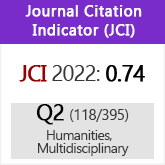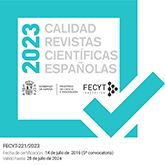Sustainability and tourism in the cultural landscapes of industrialization
DOI:
https://doi.org/10.3989/arbor.2017.785n3006Keywords:
Industrial heritage, tourism, recovery projects, sustainable development, ecomuseumsAbstract
Old mining and industrial areas, many of them already abandoned after prolonged extractive and productive activity, often put up good experiences associated with recovery heritage and landscapes. Initially promoted by public administrations, particularly municipal bodies, with the active participation of private companies and the local community, nowadays these projects are an extraordinary reference for valuing a peculiar legacy that offers extensive possibilities for reuse under the indispensable perspective of sustainable development.
Downloads
References
Albrecht, H. (2012). What does the Industrial Revolution signify? En Douet, J. (ed.). Industrial Heritage Re-tooled. The TICCIH Guide to Industrial Heritage Conservation. Lancaster: Carnegie Publishing Ltd. / The International Committee for the Conservation of the Industrial Heritage (TICCIH), pp. 17-23.
Álvarez, M. A. (ed.) (2010). Patrimonio industrial y paisaje. Actas del V Congreso para la Conservación del Patrimonio Industrial y de la Obra Pública en España. Gijón: TICCIH-España.
Benito, P. (2012). Territorio, paisaje y herencia industrial: debates y acciones en el contexto europeo. Documents d´Anàlisi Geogràfica, 58 (3), pp. 443-457. https://doi.org/10.5565/rev/dag.11
Benito, P. y Alonso, P. (2012). Industrial Heritage and Place Identity in Spain: from Monuments to Landscapes. The Geographical Review, 102 (4), pp. 446-464. https://doi.org/10.1111/j.1931-0846.2012.00169.x
Benko, G. y Strohmayer, U. (eds.) (1997). Space and Social Theory: Interpreting Modernity and Postmodernity. Blackwell Publishers. PMCid:PMC2228153
Butler, R. (1999). Sustainable tourism: a state-of-the-art review. Tourism Geographies, 1 (1), pp. 7-25. https://doi.org/10.1080/14616689908721291
Casanelles, E. (1998). Recuperación y uso del patrimonio industrial. Ábaco. Revista de Cultura y Ciencias Sociales, 19, pp. 11-18.
Castillo, A. M., López, T. J. y Millán, G. (2010). El turismo industrial minero como motor de desarrollo en áreas geográficas en declive. Un estudio de caso. Estudios y Perspectivas en Turismo, 19 (3), pp. 382-393.
Coccossis, H. (1996). Tourism and sustainability: perspectives and implications. En Priestley, G. K., Edwards, J. A. y Coccossis, H. (eds.). Sustainable tourism? European experiences. Oxford: CAB International, pp. 1-21.
Cole, D. (2004). Exploring the sustainability of mining heritage tourism. Journal of Sustainable Tourism, 12 (6), pp. 480-494. https://doi.org/10.1080/09669580408667250
Cossons, N. (2012). Why preserve the Industrial Heritage? En Douet, J. (ed.). Industrial Heritage Re-tooled. The TICCIH guide to Industrial Heritage Conservation. Lancaster: Carnegie Publishing Ltd. / The International Committee for the Conservation of the Industrial Heritage (TICCIH), pp. 6-16. PMid:22417681
Dambron, P. (2004). Patrimoine industriel et développement local. Paris: Éditions Jean Delaville. PMid:15480270
Edwards, A. y Llurdés, J. A. (1996). Mines and quarries. Annals of Tourism Research, 23 (2), pp. 341-362. https://doi.org/10.1016/0160-7383(95)00067-4
EUROSTAT (2006). Estrategia de Desarrollo Sostenible de la Unión Europea. Bruselas: Oficina Europea de Estadística.
Feliú Torras, A. (1998). El patrimonio industrial, localizaciones, regeneraciones: una nueva geografía. Ábaco. Revista de Cultura y Ciencias Sociales, 19, pp. 71-80.
Hidalgo, C. (2010). El patrimonio minero-industrial y ferroviario: nuevos recursos para nuevos turismos. Madrid: Universidad Autónoma de Madrid.
Hospers, G.-J. (2002). Industrial heritage tourism and regional restructuring in the European Union. European Planning Studies, 10, pp. 397-404. https://doi.org/10.1080/09654310220121112
Jansen-Verbeke, M. (1999). Industrial Heritage: A Nexus for Sustainable Tourism Development. Tourism Geographies, 1 (1), pp. 70-85. https://doi.org/10.1080/14616689908721295
Jones, C. y Munday, M. (2001). Blaenavon and United Nations World Heritage Site Status: Is Conservation of Industrial Heritage a Road to Local Economic Development? Regional Studies, 35, pp. 585-590. https://doi.org/10.1080/00343400120065741
Ortega Cantero, N. (2010). El lugar del paisaje en la geografía moderna. Estudios Geográficos, 71 (269), pp. 367- 393. https://doi.org/10.3989/estgeogr.201012
Pardo Abad, C. J. (1990). Cambios de uso de suelo en la ciudad: vaciado industrial y renovación urbana en Madrid. [Tesis doctoral inédita]. Universidad Autónoma de Madrid: Madrid.
Pardo Abad, C. J. (2008). Turismo y patrimonio industrial. Un análisis desde la perspectiva territorial. Madrid: Síntesis.
Pardo Abad, C. J. (2010). El patrimonio industrial en España: análisis turístico y significado territorial de algunos proyectos de recuperación. Boletín de la Asociación de Geógrafos Españoles, 53, pp. 239-266.
Pardo Abad, C. J. (2014). Indicadores de sostenibilidad turística aplicados al patrimonio industrial y minero: evaluación de resultados en algunos casos de estudio. Boletín de la Asociación de Geógrafos Españoles, 65, pp. 11-36.
Pardo Abad, C. J. (2016). El patrimonio industrial en España. Paisajes, lugares y elementos singulares. Madrid: Akal.
Pardo Abad, C. J. (2017). The post-industrial landscapes of Riotinto and Almadén, Spain: scenic value, heritage and sustainable tourism. Journal of Heritage Tourism, 12 (4), pp. 331-346. https://doi.org/10.1080/1743873X.2016.1187149
Pérez, L. y Parra, C. (2004). Paisajes culturales: el parque patrimonial como instrumento de revalorización y revitalización del territorio. Teoría, 13, pp. 9-24.
Prat Forga, J. M. y Díaz Soria, I. (2013). Análisis de la sostenibilidad económica del turismo industrial. El caso de Catalu-a. TURyDES, 6 (14), pp. 1-13. Disponible en: http://www.eumed.net/rev/turydes/14/ turismo-industrial-cataluna.pdf
Sabaté Bel, J. (2004). ¿Paisajes culturales, consecuencia de la postmodernidad? II Seminari Internacional sobre Paisatge. Barcelona: Consorci Universitat Internacional Menéndez Pelayo de Barcelona, pp. 1-19. Disponible en: http://www.coac.net/ofpaisatge/content/2004/2004_joaquin_sabate.pdf
Samuel, R. (1994). Theatres of Memory: Past and Present in Contemporary Culture. Londres: Verso.
Shackel, P. A. y Palus, M. (2006). Remembering an Industrial Landscape. International Journal of Historical Archaeology, 10 (1), pp. 49-71. https://doi.org/10.1007/s10761-006-0004-4
Sharpley, R. (2000). Tourism and Sustainable Development: Exploring the Theoretical Divide. Journal of Sustainable Tourism, 8 (1), pp. 1-19. https://doi.org/10.1080/09669580008667346
Stuart, I. (2012). Identifying industrial landscapes. En Douet, J. (ed.). Industrial Heritage Re-Tooled: The TICCIH Guide to Industrial Heritage Conservation. Lancaster: Carnegie Publishing / The International Committee for the Conservation of the Industrial Heritage (TICCIH), pp. 48-54.
Tempel, N. (2012). Post-industrial landscapes. En Douet, J. (ed.). Industrial Heritage Re-tooled. The TICCIH guide to Industrial Heritage Conservation. Lancaster: Carnegie Publishing / The International Committee for the Conservation of the Industrial Heritage (TICCIH), pp. 142-148.
Thimothy, D. J. (2011). Cultural Heritage and Tourism. An Introduction. Bristol: Channel View Publications. PMid:20824709
Vahí, A. (2010). Patrimonio industrial como recurso para un turismo sostenible: la cuenca del Guadalfeo (Granada). Cuadernos Geográficos, 46, pp. 65-91.
Valenzuela, M., Palacios, A. J. e Hidalgo, C. (2008). La valorización turística del patrimonio minero en entornos rurales desfavorecidos. Actores y experiencias. Cuadernos de Turismo, 22, pp. 231-260.
Zárate Martín, M. A. (2011). La visita de empresa, otra forma de hacer turismo. Estudios Geográficos, LXXII (270), pp. 291-321. https://doi.org/10.3989/estgeogr.201112
Zárate Martín, M. A. (2012). Geografía urbana. Dinámicas locales, procesos globales. Madrid: Universidad Nacional de Educación a Distancia.
Otros recursos
Desarrollo sostenible 2008. Principales indicadores de España para el seguimiento de la Estrategia de DS de la UE. Madrid: Instituto Nacional de Estadística, 2009. Disponible en http://goo.gl/L2pt7w
Plan Nacional de Patrimonio Industrial (2011). Madrid: Ministerio de Educación, Cultura y Deporte, 2011. Disponible en: http://www.mecd.gob.es/ planes-nacionales/planes-nacionales/ patrimonio-industrial.html
Published
How to Cite
Issue
Section
License
Copyright (c) 2017 Consejo Superior de Investigaciones Científicas (CSIC)

This work is licensed under a Creative Commons Attribution 4.0 International License.
© CSIC. Manuscripts published in both the printed and online versions of this Journal are the property of Consejo Superior de Investigaciones Científicas, and quoting this source is a requirement for any partial or full reproduction.All contents of this electronic edition, except where otherwise noted, are distributed under a “Creative Commons Attribution 4.0 International” (CC BY 4.0) License. You may read here the basic information and the legal text of the license. The indication of the CC BY 4.0 License must be expressly stated in this way when necessary.
Self-archiving in repositories, personal webpages or similar, of any version other than the published by the Editor, is not allowed.















